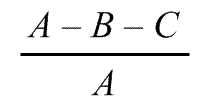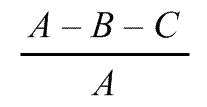[F1Basic definitionsU.K.
Textual Amendments
F1Pt. 21A inserted (with effect in accordance with Sch. 16 para. 5 of the amending Act) by Finance Act 2010 (c. 13), Sch. 16 para. 3
937CMeaning of “risk transfer scheme”U.K.
(1)A scheme to which a company (“company A”) is a party is a “risk transfer scheme” if conditions 1 to 3 are met.
(2)Condition 1 is that the purpose, or one of the main purposes, of any member of the relevant group on entering into the scheme is to obtain a financial advantage for the relevant group that it is reasonable to assume could not otherwise have been obtained without the relevant group becoming subject to (or incurring the cost of avoiding) a relevant risk.
(3) In subsection (2) “ a relevant risk ” means a risk that the relevant group would make economic losses in one or more accounting periods of company A as a result of fluctuations in—
(a)the rate of exchange between any two currencies,
(b)the retail prices index (or any similar general index of prices) or any other index, or
(c)any price or other value.
(4)Condition 2 is that, as a result of the scheme, and disregarding the effect of this Part, the relevant group—
(a)is not subject to the relevant risk, or
(b)is subject only to a negligible proportion of that risk.
(5)Condition 3 is that, disregarding the effect of the provisions of the Corporation Tax Acts, condition 2 would not be met.
(6)For the purposes of this section the relevant group obtains a “financial advantage” from a scheme if, taking into account the effect of the scheme on each member of the group, the scheme—
(a)increases the return on any investment,
(b)reduces the costs of any borrowing, or
(c)has an effect economically equivalent to that mentioned in paragraph (a) or (b).
937DMeaning of “the scheme rate, index or value”U.K.
In this Part “ the scheme rate, index or value ”, in relation to a risk transfer scheme, means the rate, index or value mentioned in section 937C(3)(a), (b) or (c) in relation to the relevant risk for the scheme.
937EScheme losses and scheme profitsU.K.
(1) A loss or profit made by a company in an accounting period is a “scheme loss” or “ scheme profit ” in relation to a risk transfer scheme to which the company is a party at any time in the period if the loss or profit—
(a)is from a loan relationship, or derivative contract, that is part of the scheme,
(b)would, apart from this Part, be brought into account in determining a debit or credit for the purposes of Part 5 of CTA 2009 (loan relationships) or Part 7 of that Act (derivative contracts), and
(c)arises as a result of fluctuations in the scheme rate, index or value.
(2)References in this Part to a scheme loss or scheme profit made by a company in a period that is not an accounting period of that company are to the scheme loss or scheme profit that the company would have made in the period from the loan relationship or derivative contract in question if the period had been an accounting period of the company.
(3)References in this section to a loss or profit from a loan relationship or a derivative contract include—
(a)a loss or profit from a related transaction, and
(b)a loss or profit of a capital nature.
(4) In subsection (3)(a) “ related transaction ” has the meaning given by—
(a)section 304 of CTA 2009 (in relation to a loan relationship), or
(b)section 596 of that Act (in relation to a derivative contract).
937FRing-fenced scheme losses and relevant scheme profitsU.K.
(1)Subsection (2) applies if—
(a)a company makes one or more scheme losses in an accounting period in relation to a risk transfer scheme, and
(b)disregarding any profits or losses made otherwise than as a result of the scheme, the relevant group makes a pre-tax economic loss in the period as a result of fluctuations in the scheme rate, index or value.
(2)The relevant proportion of each scheme loss made by the company in the accounting period is a “ring-fenced scheme loss”.
(3) For this purpose “ the relevant proportion ” means—
where—
A is the total of the scheme losses made in the period in relation to the scheme by the members of the relevant group,
B is the total of the scheme profits made in the period in relation to the scheme by the members of the relevant group, and
C is the pre-tax economic loss referred to in subsection (1)(b).
(4)Subsection (5) applies if—
(a)a company makes one or more scheme profits in an accounting period in relation to a risk transfer scheme, and
(b)disregarding any profits or losses made otherwise than as a result of the scheme, the relevant group makes a pre-tax economic profit in the period as a result of fluctuations in the scheme rate, index or value.
(5)The relevant proportion of each scheme profit made by the company in the accounting period is a “relevant scheme profit”.
(6) For this purpose “ the relevant proportion ” means—
where—
A is the total of the scheme profits made in the period in relation to the scheme by the members of the relevant group,
B is the total of the scheme losses made in the period in relation to the scheme by the members of the relevant group, and
C is the pre-tax economic profit referred to in subsection (4)(b).]


